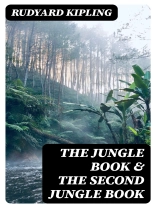Rudyard Kipling’s 'The Jungle Book’ and its sequel, 'The Second Jungle Book, ’ are seminal works in children’s literature that weave rich tapestries of adventure and moral lessons through the lens of anthropomorphized animals in the Indian jungle. These tales, anchored in a colonial context, showcase Kipling’s masterful use of vivid imagery and rhythmic prose, creating a harmonious blend of narrative and verse. Themes of belonging, identity, and the natural order resonate deeply, inviting readers to explore the complexities of both the human and animal worlds in a colonial India shaped by contrasting cultures and power dynamics. Rudyard Kipling, born in 1865, spent much of his early life in India, an experience that fundamentally influenced his writing. The diverse landscapes and intricate social structures of the subcontinent permeate his work, providing a backdrop for his exploration of moral dilemmas and the intricacies of civilization. Kipling’s background as a colonial British writer informs the nuanced perspectives he presents, reflecting both admiration and critique of the cultures he depicts. 'The Jungle Book’ and 'The Second Jungle Book’ are essential reads for anyone seeking a deeper understanding of the interplay between nature and humanity. With enduring characters like Mowgli, Baloo, and Shere Khan, these stories captivate readers of all ages, making them a timeless exploration of friendship, loyalty, and the eternal struggle between good and evil.
O autorze
Rudyard Kipling (1865-1936) was a prolific English writer and poet, born in Bombay, India, during the British Raj. He is best known for his rich storytelling, which often incorporated his experiences of and views on the British Empire. Kipling’s most renowned works include 'The Jungle Book’ (1894) and 'The Second Jungle Book’ (1895), which are collections of stories that exhibit his inventive use of anthropomorphism, weaving tales about the adventures of Mowgli, a boy raised by wolves, and other feral characters in the Indian jungle. These narrations not only display his creative prose style but also delve into the rudimentary laws and ethos of the wild, juxtaposed with imperialistic themes that explore the moral fabric of civilization and nature. Kipling’s storytelling espouses a narrative technique that comfortably straddles the lines between fable, myth, and allegory, often tinged with a didactic quality that was aimed at the moral instruction of his readers. His narratives have had a lasting impact on Western perceptions of childhood, the jungle, and the animal kingdom, and continue to be celebrated for their imaginative prowess and linguistic dexterity. For his contribution to literature, Kipling was awarded the Nobel Prize in Literature in 1907, becoming the first English-language recipient to be so honored.












